Review Article - (2020)Volume 5, Issue 2
Hair grows all over the human body except the palms and soles of the feet. Of course, many hairs are so thin that they are virtually invisible. Hair is made of a protein called creatine. Creatine is made in the follicle in the outermost layer of the skin. As the new hair cells (creatine) are made by the follicles, the old hair cells come out of the skin due to the pressure of the new cells. This is about 6 inches (15 cm) per year. It should be said that every strand of hair on the head is actually a strand of dead creatine cells. The average number of adult hair is about 100,000 to 150,000 hairs, which is about 100 hairs a day. So seeing a few strands of hair on a brush is not necessarily a dangerous thing.
Men's hair loss or androgenic alopecia is a common disorder that spreads with age. This disorder leads to thinning hair and eventually hair loss. Both men and women may experience this type of hair loss. About 70% of men and perhaps many women over the age of 40 have it. In men, hair loss usually occurs on both sides of the forehead and in the middle of the head, so that the remaining hair becomes the horseshoe shape. This condition is different in women and is more common in the central areas of hair loss. The changes in only one AR gene, located on the long arm of the X sex chromosome Xq12, have been confirmed in scientific studies for this syndrome.
Androgenic alopecia; Hair loss; Hirsutism; AR gene; Dihydrotestosterone
ALT: Alanine Aminotransferase; AST: Aspartate Amino- Transferase; ALP: Alkaline Phosphatase
Androgenic alopecia is a common type of hair loss in both men and women. In men, this condition is also known as male pattern baldness. Hair loss is defined in a specific pattern, which occurs in both men and women. Over time, hair loss is significantly reduced in the form of "M". Hair loss on the crown of the head (near the top of the head) is mild and often shifts to a partial or complete part (Figure 1) [1].
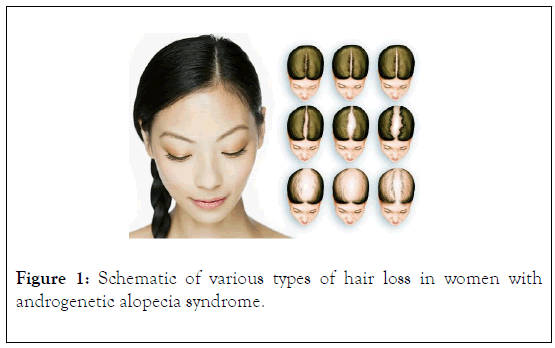
Figure 1: Schematic of various types of hair loss in women with androgenetic alopecia syndrome.
Hair loss pattern in women is different from baldness in men. In women, the hair becomes thinner across the head and the hairline does not fall out. Androgenetic alopecia in women rarely leads to general baldness.
Androgenic alopecia in men is associated with several other diseases associated with cardiovascular disease and increased prostate. In addition, prostate cancer, insulin resistance disorders (such as diabetes and obesity), and high blood pressure (hypertension) are associated with androgenic alopecia. In women, this type of hair loss is associated with an increased risk of polycystic ovary syndrome (PCOS). PCOS has a hormonal disorder that can lead to irregular menstruation, acne, excess hair elsewhere in the body (hirsutism), and weight gain (Figure 2) [1].
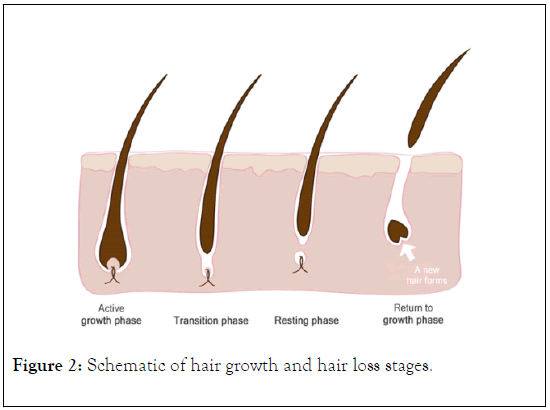
Figure 2: Schematic of hair growth and hair loss stages.
Male Various genetic and environmental factors may be involved in the development of androgenetic alopecia. Although researchers continue to study the risk factors that may contribute to the disease, most of these factors remain unknown. Researchers have found that this type of hair loss is related to hormones known as androgens, especially androgens called dihydrotestosterone. Androgens are important for the normal growth of prenatal and puberty men. Androgens also have other important functions in both men and women, such as regulating hair growth and sexual maturity (Figure 3) [1,2].
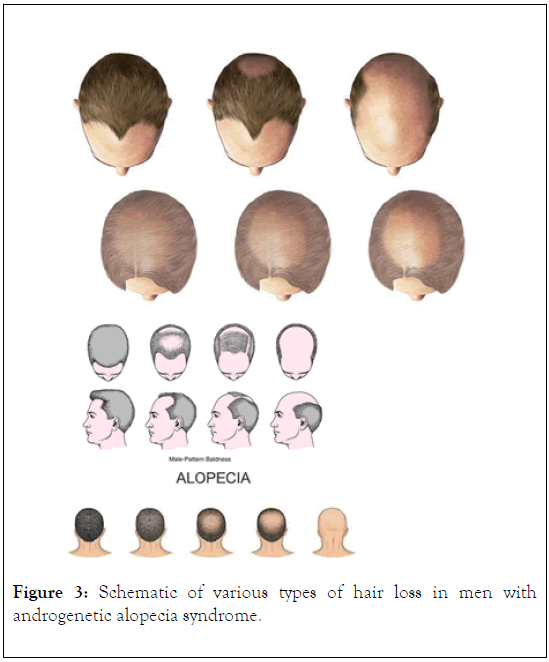
Figure 3: Schematic of various types of hair loss in men with androgenetic alopecia syndrome.
Hair growth begins under structures called follicles. Each strand of hair usually grows for 2 to 6 years, goes on a break for a few months, and then disappears. This cycle begins when the hair follicle begins to grow. Increased levels of androgens in hair follicles can lead to shorter hair growth cycles and short, thin hair growth. In addition, there is a delay in the growth of new hair to replace the strands that are shed (Figure 4).
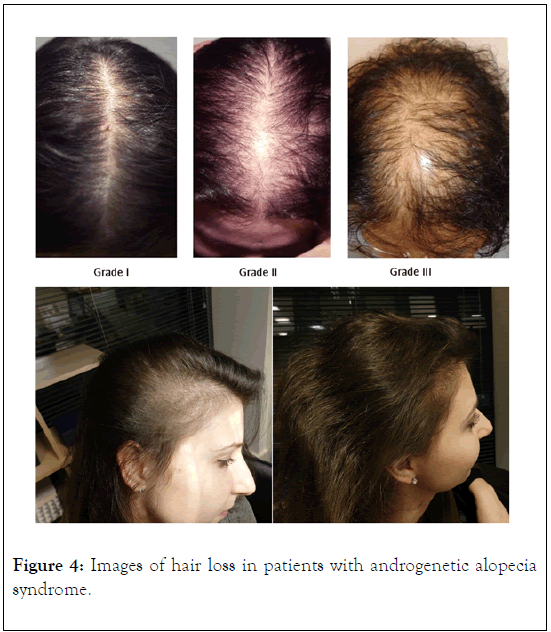
Figure 4: Images of hair loss in patients with androgenetic alopecia syndrome.
Although researchers believe that several genes are involved in androgenetic alopecia syndrome, changes in only one AR gene located on the long arm of the X sex chromosome Xq12 have been confirmed in scientific studies for this syndrome. The AR gene provides the necessary instructions for protein synthesis in the name of the androgen receptor. Androgen receptors allow the body to respond appropriately to dihydrotestosterone and other androgens. Studies show that changes in the AR gene increase the activity of androgen receptors in hair follicles. However, it is not yet known how these genetic changes increase the risk of hair loss in men and women with androgenetic alopecia syndrome (Figure 5) [1,3].
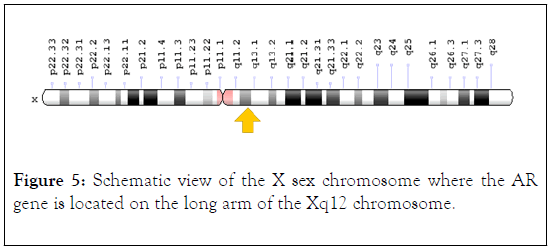
Figure 5: Schematic view of the X sex chromosome where the AR gene is located on the long arm of the Xq12 chromosome.
Researchers are also looking at the link between androgenetic alopecia and other medical conditions, such as cardiovascular disease and prostate cancer in men, and polycystic ovary syndrome in women. They believe that some of these disorders may be related to higher levels of androgens, which may help explain why they experience androgen-related hair loss. Other hormonal, environmental, and genetic factors that have not yet been identified may be involved in this syndrome.
The hereditary pattern of androgenetic alopecia syndrome is unclear because many genetic and environmental factors may be involved. However, this condition depends on clustering in families, and having a close relationship with natural hair loss is a risk factor for developing this syndrome [1,4].
Androgenetic alopecia syndrome is a common cause of hair loss in men and women. This type of hair loss affects about 50 million men and 30 million women in the United States. Androgenetic alopecia can begin in early adolescence, and the risk of recurrence increases with age. More than 50 percent of men over the age of 50 have some hair loss talent. In women, hair loss is more likely to occur after menopause (Figure 6) [1,5].
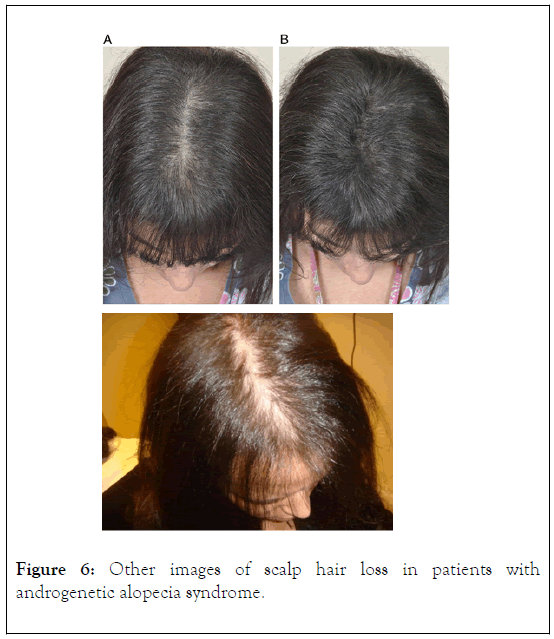
Figure 6: Other images of scalp hair loss in patients with androgenetic alopecia syndrome.
Androgenetic alopecia syndrome is diagnosed based on the clinical and clinical findings of patients and some pathological and dermatological tests. The most accurate way to diagnose this syndrome is to perform a molecular genetic test for the AR gene to check for possible mutations [1,6].
The strategy for the treatment and management of androgenetic alopecia syndrome is symptomatic and supportive. Treatment may be coordinated by a team of specialists, including a dermatologist, gynecologist, and endocrinologist. There is no standard treatment for this syndrome, and all clinical measures are aimed at reducing the suffering of patients. Genetic counseling is also necessary for all parents who want a healthy child [7-10].
Men and women experience similar androgenic alopecia, although it may be more hidden in women. In men, androgenic hair loss is accompanied by gradual thinning of the hair, which often affects the scalp and forehead. In many men, the hairline goes back and forth around the hairline. And it moves through the scalp and creates an M-shaped hair loss pattern. Areas affected by hair loss and the presence of uneven tissue length are classic signs of male pattern baldness or alopecia.
Women have similar patterns of hair loss, although hair loss is usually slightly more common than men; women are less likely to experience hair loss.
Androgenic alopecia can usually be diagnosed by examining the scalp. In some cases, a blood test may be needed to evaluate other causes of hair loss, such as hormonal changes, iron levels (anemia), or thyroid problems.
The psychological impact of hair loss can be severe for some people, especially women, as there is less understanding or less acceptance of the disease. Both men and women may have difficulty with low self-esteem or feel unattractive.
Minoxidil and finasteride are available for the treatment of male pattern baldness in men. Women can be treated with minoxidil or spironolactone. Sometimes, finasteride is used in women who do not respond to other treatments, but the effect is not clear. Surgical options may also be considered in some cases.
Minoxidil promotes hair growth by increasing the growth phase of the follicle and stimulating more follicles to produce hair. It produces hair and the resulting hair tends to be bigger and thicker. Minoxidil is available as 2% and 5%, respectively. The 5% solution is more effective in men and may be more effective in women and can be purchased over-the-counter.
Minoxidil is applied to the scalp. One milliliter of liquid or foam should be applied to the affected areas of the scalp using a dropper or spray pump and should be gently applied to the affected area with one finger.
Minoxidil should be used for at least six months to determine if it is effective. When treated, hair usually begins to fall out within two months of starting treatment, and the hair begins to grow back in four to eight months. The effects of minoxidil usually appear after 12 to 18 months of use. Treatment with minoxidil should be continued indefinitely. If cut, the hair will lose its effect.
Finasteride (Propecia)-Tablet finasteride, which reduces the production of one of the hormones associated with androgenic hair loss, and thus increases the amount of hair on the scalp.
Men can use finasteride orally at a dose of 1 mg per day. Side effects may include weakness and dizziness. Doses higher than finasteride (such as those used to treat certain prostate conditions) can cause side effects, including erectile dysfunction and decreased libido. However, side effects with a dose of 1 mg are commonly used to treat hair loss.
Finasteride is not safe for use in pregnant women due to concerns about the formation of abnormal genitals in the male fetus. These women should not even touch the finasteride pill. Finasteride has not been shown to be effective in helping many women regrow hair.
Spironolactone also reduces the production of androgenic hormones and helps with hormonal hair loss. Women with hormonal hair loss who do not respond to minoxidil may benefit from spironolactone. Potential side effects include dizziness, drowsiness, breast tenderness, high potassium levels in the blood. Patients should. Like finasteride, spironolactone should not be used during pregnancy.
For some patients, hair loss surgery may be an option. Surgical options include hair transplants, in which healthy follicles from other parts of the scalp are transplanted to areas affected by baldness. Scalp reduction is another procedure that is sometimes performed. To reduce the scalp, the bald patches of scalp are removed and the remaining skin is sutured.
Men with androgenic alopecia have lower sex hormone levels associated with globulin, follicle-stimulating hormone, testosterone and epitestosterone than other men. Although the follicles are already located at the site of hair loss, they are more likely to be inactive. Studies show that the growth and sleep of hair follicles, which depend on the insulin-like growth factor in the papilla of the skin (dermal papilla), is affected by dihydrotestosterone.
Androgens play an important role in male sexual development. They regulate the sebaceous glands, hair growth and libido. As you age, androgens stimulate facial hair growth, but stop hair growth in the scalp. This condition is called androgen paradox.
Men with androgenic alopecia usually have high "5 alpha reductase" and low testosterone. Free testosterone, which is abundant in the prostate and scalp glands, is converted to dihydrotestosterone (DHT) by 5 alpha alphareductase, which leads to male pattern baldness.
Baldness of the scalp can have a variety of causes, but the evidence suggests that the main cause of male pattern baldness is genetic. Since androgens and androgen receptors are the main cause of androgenic alopecia, their genetic studies are the subject of further research respectively.
Epidemiology
Severely affected by age.
Early signs are seen during adolescence.
Half of men reach the age of 50.
Its severity and progress vary from person to person.
Whites are four times more likely to be infected than African races. It is less common in Asian men.
Doing nothing seems to be the best thing to do for this disorder. For most people, there is no effective treatment. So accepting and coping with it is the best solution. There are two treatments for androgenic alopecia. But many people have stopped treatment because they did not succeed.
Finasteride inhibits type 5 alpha-5 reductase. Finasteride prevents the conversion of testosterone to dihydrotestosterone in the scalp. After 3 months of using finasteride, hair grows and grows. Studies have shown that after 2 to 3 years of continuous use of finasteride, hair volume increases well. Finasteride has the greatest effect on the middle of the head. One of the side effects of taking this drug is male infertility (this complication is more likely in high doses).
Dutasteride is similar to finasteride, except that both types inhibit 5 alpha reductase. It has been used to treat hair loss in Korea but has not been used in the United States. In Iran, the drug is also smuggled into some pharmacies, especially in border towns.
Minoxidil is a growth stimulant that stimulates damaged hair follicles to start producing hair again. However, minoxidil cannot protect the follicles from further DHT damage. Other treatment options include tretinoin with minoxidil, andronolactone.
In cases where hair loss has progressed and drug treatment is no longer appropriate, hair transplantation is used as a treatment. Naturally, 1 to 4 hairs (follicular units) are separated and transferred to the hair restoration areas. These follicular units are surgically transplanted to the scalp in close proximity to large numbers.
Most people use therapies that have not been proven to be effective. There is no evidence that vitamins, minerals, or other dietary supplements have an effect on stopping male pattern baldness. It should be noted that in 2008 there was very little evidence of the use of lasers to treat androgenic alopecia.
Citation: Asadi S (2020) The Role of Mutations on Gene AR, in Androgenetic Alopecia Syndrome. Immunogenet Open Access. 5:131.
Received: 06-May-2020 Accepted: 20-May-2020 Published: 27-May-2020
Copyright: © 2020 Asadi S. This is an open-access article distributed under the terms of the Creative Commons Attribution License, which permits unrestricted use, distribution, and reproduction in any medium, provided the original author and source are credited.